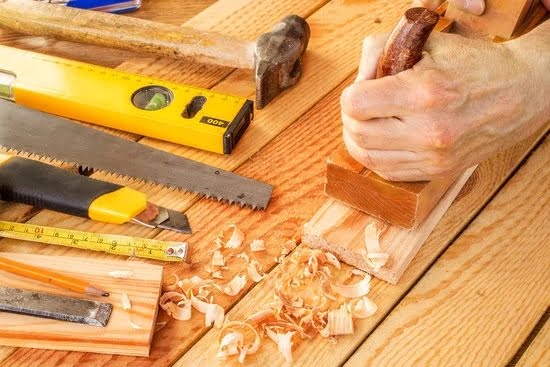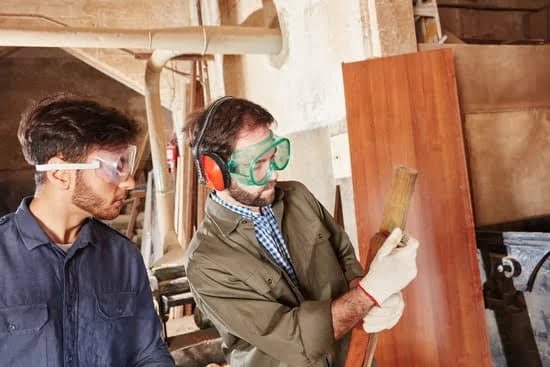Introduction
Woodworking outdoor tables adds a unique touch of charm, style and class to any household. Whether it’s for the patio, porch or backyard garden, it can be the perfect addition for your home. With the right kind of materials and tools, you can make a beautiful table that will last you many years. However, before you begin your project, it is important to understand what kind of materials are going to be best suited for building an outdoor table.
Wood such as oak and cedar have been popular choices for outdoor furniture because of their durability factor. They are well-suited to withstand different climates, including rain and snow. These woods are also quite easy to care for with regular cleaning and maintenance routines. A quality sealant used on the wood helps protect it from the elements while still looking great after many years of use in outdoor applications.
Another common material used in woodworking outdoor tables is mahogany which offers a luxurious look without requiring frequent maintenance. Mahogany is softer than many other types of wood but is still known as one of the stronger woods when it comes to protection against UV rays and deterioration caused by weather conditions. To prevent fading or cracking over time, one should apply a high-quality sealant at least once a year in order to keep its attractive appearance intact.
Finally, tropical hardwood varieties such as teak or ipe are becoming increasingly popular for those looking for maximum durability outdoors. This type of wood will not require any sealant or regular maintenance routine because these hardwoods have natural water repellent oils which allow them to naturally resist damage from moisture and UV rays – making them ideal for long lasting use when exposed to mother nature’s elements! In addition to being highly durable, both teak and ipe feature an exquisite classic look that is often desired among those investing in furniture pieces for their outdoors spaces.
Benefits
A woodworking outdoor table is a great addition to any backyard or garden. Not only does it provide you with additional seating or decoration for your outdoor area, but it also brings a natural and inviting atmosphere to the space. Outdoor tables made from wood open up endless possibilities for customization, allowing you to create a truly unique and beautiful piece of furniture. Whether it is for entertaining guests, enjoying leisurely meals with family, or just relaxing with friends on your patio or terrace, an outdoor table can functionally transform and improve your outdoor living experience. You can choose from various designs such as rustic, modern, classic, or contemporary; each offering many opportunities for personalization through color, finish and texture. Durable materials like cedar and teak will stand up to the wear and tear of the elements without losing their natural beauty, making them great options for outdoor tables.
Step by Step Guide
1. Begin by gathering the correct materials. For woodworking outdoor furniture you will need a saw, wood glue, screws and nails, sandpaper, 2x4s or other pressure-treated lumber, dowels or rods to join the pieces together and any specific tools required for the design of your table that can be found at most home improvement stores.
2. Cut all of your lumber according to size and design specifications with a circular saw or other hand-held cutting tool. Make sure to measure twice and cut once!
3. Sand down any rough edges on the boards in order to create a smooth finish; this is especially important for an outdoor surface that may be exposed to weather elements like rain or sun over time.
4. Pre-drill any pilot holes for screws or nails before driving them into place in order to reduce cracking or splintering of the material from too much force applied directly into it.
5. Securely attach two boards at either end of the table in parallel with one another, then begin constructing the frame by attaching additional boards across these first two boards. This will form a basic box, which you can customize based on your desired size and shape parameters using dowels or other connections where needed.
6. To complete the table top, use additional timber strips or smaller boards placed perpendicular to each other until they fill in all of the space created by your frame’s rectangular shape (this way you will avoid having excess material that would need to be trimmed down). Secure these small boards into place with wood glue and appropriate exterior grade fasteners like screws or nails while keeping pieces flush along sides as best possible during assembly; some sanding may be necessary once completed if minor gaps exist between variety of planks used here.
7 .Once everything is assembled, add a final coat of sealer/paint/stain for longevity and protection against harsh outdoor elements before enjoying your new outdoor table!
Materials
When considering building an outdoor dining table, it is important to select the right materials for its construction. Some of the most durable woods best used in making a long-lasting, weather-resistant outdoor dining table include Teak, Redwood, Cedar and Mahogany.
Teak is known for its natural resistance to decay as well as its sturdiness against everyday wear and tear. This wood has a high oil content that offers extra water-resistance protection. Redwood has similar properties to teak and is also notable for its unique weather-resistant properties, making it ideal for use in outdoor settings. It has a high natural level of resin content, which keeps insects away and helps preserve the wood’s coloration. Cedar is another excellent option when building an outdoor table and is often praised for its ability to resist warping and cracking due to fluctuations in temperature or humidity levels. Its porous grain pattern also helps keep moisture out that might otherwise cause rot or deterioration of the wood over time. Finally, Mahogany offers beautiful grains and shades ideal for every taste. This type of wood is also incredibly strong, making it able to withstand extreme temperatures as well as moisture from rain or significant swings in humidity levels over time.
Finishing Touches
To make your woodworking outdoor table truly stand out, consider adding character to the design. This can be achieved in a number of different ways. For example, you could stain or paint the table in an eye-catching color, add some intricate carvings, or create interesting inlays with contrasting woods. Additionally, you could incorporate metal accents such as rivets, decorative bolts or hinges for a touch of industrial flair. Finish the piece off with a clear coat for added protection and shine. Another way to customize your table is by engraving a unique message or pattern onto its surface. No matter which methods you choose, adding character to your outdoor table is sure to make it truly one-of-a-kind!
Maintenance
Maintaining a woodworking outdoor table is essential to ensuring it looks its best and lasts for many years. To keep your table in great shape, you should take the following steps:
Clean the Table Regularly: Run a damp cloth or brush regularly over the surface of your table to remove debris such as dirt and leaves. Make sure to wipe down hard-to-reach corners and crevices with a soft cloth, using mild detergent if necessary.
Protect with Oil and Wax: Treat your outdoor table with a reconditioning oil or wax periodically to protect it from water damage and scratches. Choose a high-quality commercial product that is specifically formulated for woodwork, as this will penetrate deeply into the wood grain and prevent moisture from seeping in while also providing additional protection against weapons and abrasion.
Cover It Up: When not in use, cover your outdoor table with an all-weather cover that’s specifically designed for it, so it won’t be exposed to rain, sun, wind or other elements that can cause damage. Be sure to check the cover periodically to ensure it’s still functioning properly over time.
Avoid Harsh Cleaners: Don’t use harsh solvent cleaners like bleach on your outdoor table as these can damage the finish and even corrode some of the metal parts. Instead use only mild detergents that are safe for use on wood furniture items when necessary.
Inspect Regularly: Check your outdoor table occasionally for any signs of wear or tear such as cracks or warping caused by extreme temperatures or long periods in direct sunlight. If any damage is found, take preventative steps immediately to address the issue before it becomes worse.
Inspiration
Creating an outdoor table with achieved woodworking can be a great way to enjoy the outdoors and make memories that will last a lifetime. You don’t need to be an experienced woodworker to make this project come alive, starting with the inspiration phase. Gather photos of outdoor tables you love or visit your local garden shop for ideas on what materials and style is best suited for your project. Be sure to decide how large you want it and where it should be placed in your backyard, as well as its purpose; whether it will host two people for morning coffee or four people for dinner. Once inspired and prepared, it’s time to select the lumber for your project. Select the type of wood you prefer and the necessary hardware needed to create a sturdy structure. Taking into account the markups and design details offered in the inspiration photos, consider ways to make your table stand out from its counterparts by adding detailed edges such as circles or curves around each leg. Use both power tools like saws and routers as well as sandpaper, drills and brushes with stains or waxes if desired. After assembly is finished, set up your new outdoor table with picnic ware or decorations that give it life ” then enjoy your creation!
Conclusion
In conclusion, if you’re looking for a stylish outdoor table with standout features and strong performance, woodworking outdoor tables are an excellent choice. Not only do these tables provide a beautiful solution which perfectly complements your patio décor, but they also promise to stand the test of time due to their durable construction and waterproofing treatment. Furthermore, with a little patience and dedication, you can build a table all your own with whatever design or variations you may desire. With the help of modern power tools and some solid woodworking principles, creating your own outdoor table is easier than ever before. Take the leap today and reap the rewards of having your very own outdoor table this summer!

Hi everyone! I’m a woodworker and blogger, and this is my woodworking blog. In my blog, I share tips and tricks for woodworkers of all skill levels, as well as project ideas that you can try yourself.





